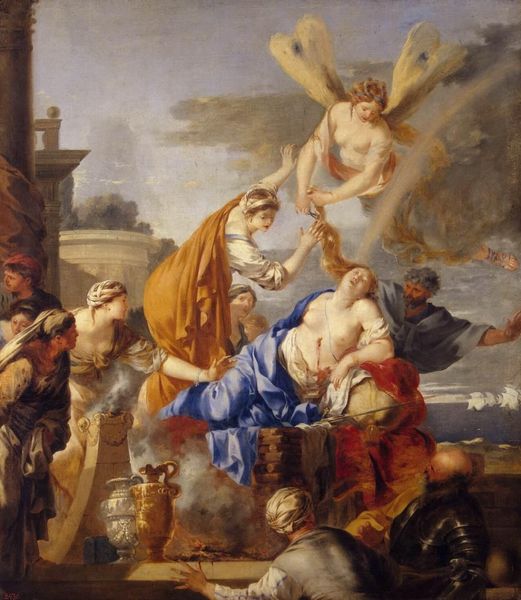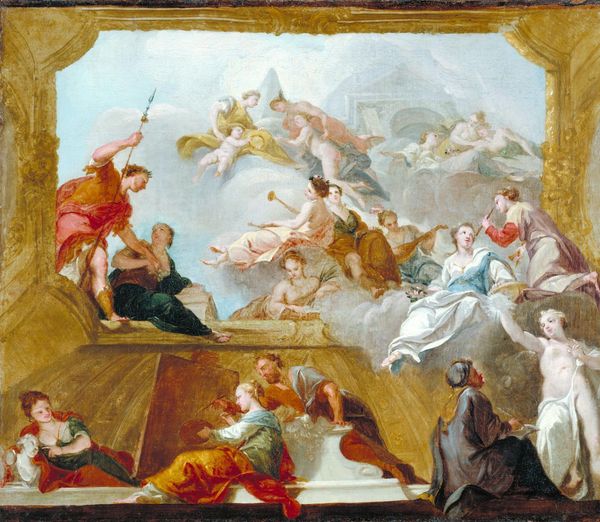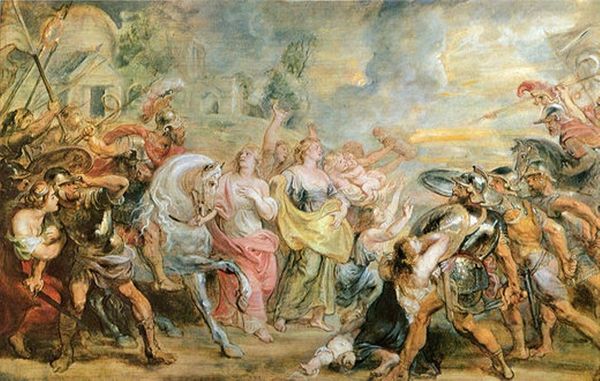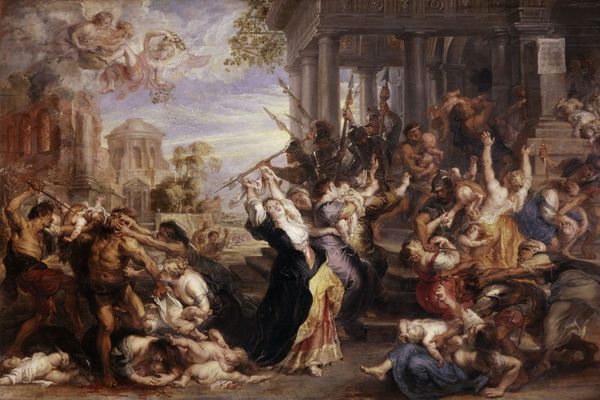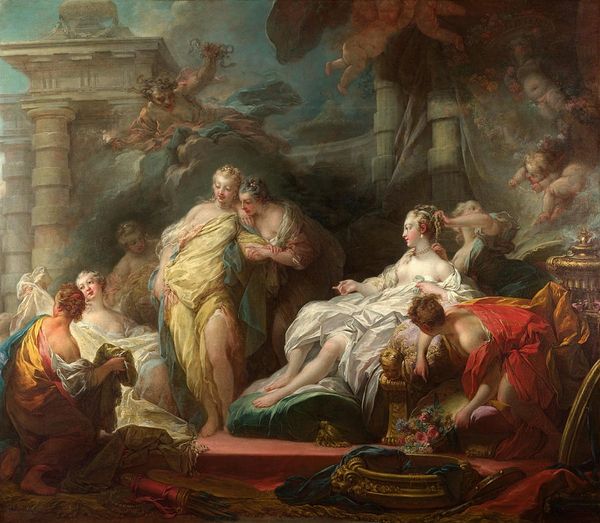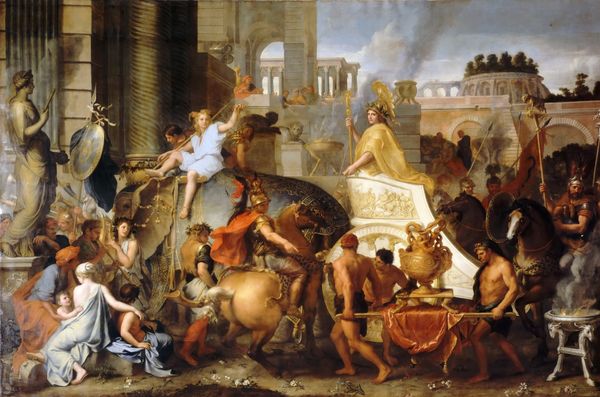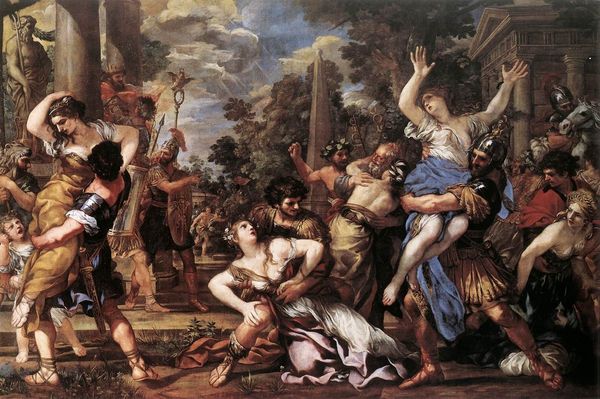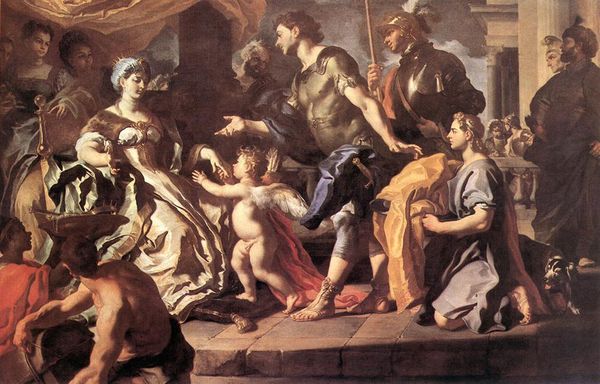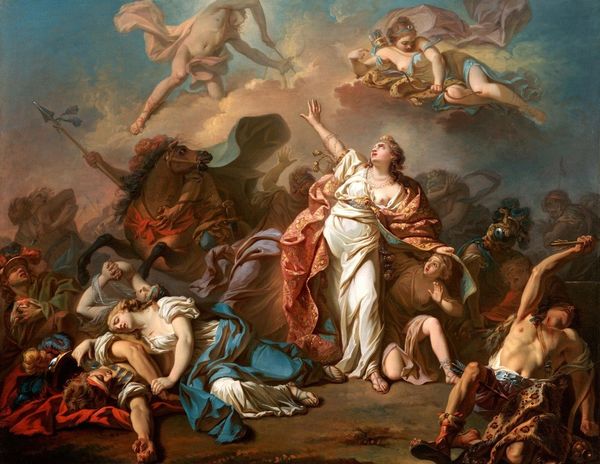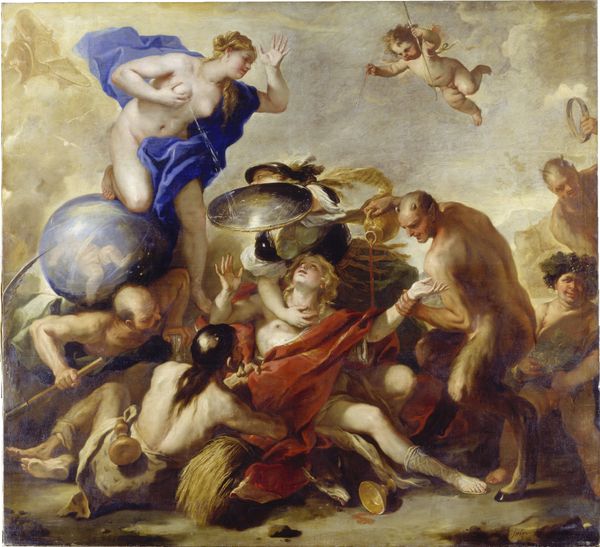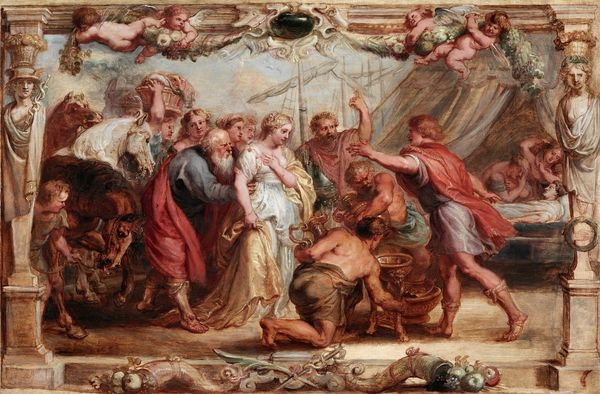
painting, oil-paint
#
gouache
#
narrative-art
#
baroque
#
painting
#
oil-paint
#
figuration
#
oil painting
#
mythology
#
history-painting
#
academic-art
Copyright: Public domain
Curator: This grand scene gives us Placido Costanzi's vision of "Alexander the Great founding Alexandria," rendered in oil paint around 1737. Quite an ambitious piece. Editor: The dynamism! I'm immediately struck by the sheer busyness of the composition. There's so much going on; the architectural structures being built on the left, the group of people on the right with Alexander. It feels as if the artist wanted to convey action, and the divine presence watching overhead almost underscores it. Curator: Absolutely. And consider the socio-economic aspect. Costanzi, painting in the Baroque style, wasn't just slinging paint; he was participating in a system of patronage and artistic production. We see here how history painting of this time often functioned as a visual declaration of power, reinforcing the status of rulers through the depiction of noble acts from antiquity. Editor: Yes, power conveyed through very specific imagery. The pointing gesture of Alexander directs not just where the city will arise but guides its fate. We see Athena and other divine figures floating on clouds above, a symbolic endorsement of his actions and, of course, his legacy. The man laying the plans is almost a Moses type character himself. There’s almost a translatio imperii theme going on in the visuals here! Curator: Consider how the classical ideals shaped the workshops of artists, impacting the materiality of the painting. Costanzi and his contemporaries revived the glazing techniques developed in the Renaissance. Layer upon layer of translucent paint allowed the artists to achieve a depth and luminosity which really showcases the artist’s mastery. Look how it illuminates those heavenly figures, like you mentioned. Editor: That specific golden light does bring the eye upwards to the mythological. I’m particularly fascinated by the visual vocabulary of power: the armor, the commanding gestures, the celestial blessing... all contribute to this constructed image of the ideal founder. The fact he's portrayed surrounded by men in similar garb only emphasizes his prowess as a ruler and war hero. Curator: Indeed. What appears as simple brushstrokes hides a very conscious use of available resources: pigments sourced through trade, artisanal know-how passed through workshops, and a reliance on ancient models and historical painting practices. Each element speaks volumes about the era’s art infrastructure. Editor: Studying pieces like this reveals much about how cultures choose to represent authority figures, often weaving a symbolic tapestry that reinforces ideologies and even the perception of the ruler in years to come. A grand work. Curator: It prompts me to consider how the artist utilized his material context to create something we still reflect on today.
Comments
No comments
Be the first to comment and join the conversation on the ultimate creative platform.
